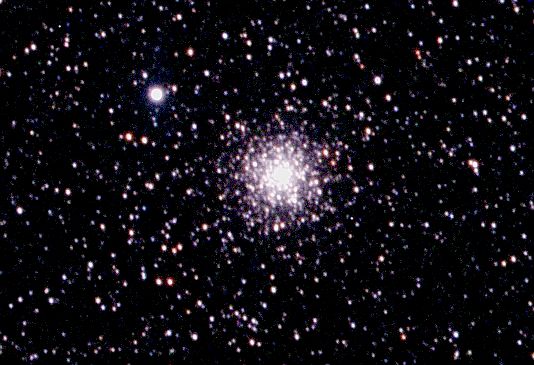
M69 is a magnitude 7.7 globular star cluster in Sagittarius. Because it is dimmer and smaller than several other showcase objects nearby, it does not attract the attention that it might if located in a different region of the sky. Nevertheless, it is a very attractive globular cluster, looking very much like a mound of diamond dust through a good telescope. An amateur size telescope should present several well resolved stars in the range of magnitude 14 to 16. The cluster becomes an impressive object in a moderate size telescope, which will show the brightest stars in the cluster as individual pin points of light. The nearby star to the upper left of the cluster in this image shines at magnitude 9.
M69 has been found to be one of the most metal-rich globular clusters known. The cluster lies at a distance of about 36,000 light-years from our solar system. M69 is moving away from us at a rate of about 59 miles per second. The diameter of the globular cluster is about 70 light-years. The cluster contains at least 8 variable stars, including two long period variables.
M69 was discovered by M. de LaCaille at the Cape of Good Hope in 1752. The cluster was observed and noted by Messier in 1780. In the early crude telescopes of the time, the object was thought to resemble the nucleus of a comet. John Herschel later found that the cluster could be clearly resolved into stars with his 18-inch reflector.
This is an RGB composite CCD image taken with an SBIG ST-8E CCD using a Takahashi FCT-150 refractor carried on a Takahashi NJP mount. This image was taken from a dark sky observing site in western Arizona.
M69 (NGC 6637)
Constellation: Sagittarius
RA:18h 31m 30.3s Dec:-32d 20' 56"
July 15, 2001
Image by Sid Leach
Scottsdale, Arizona
Recent Images.
Complete list of images.
Description of equipment used to acquire images.
Home
Feedback and comments should go to Sid